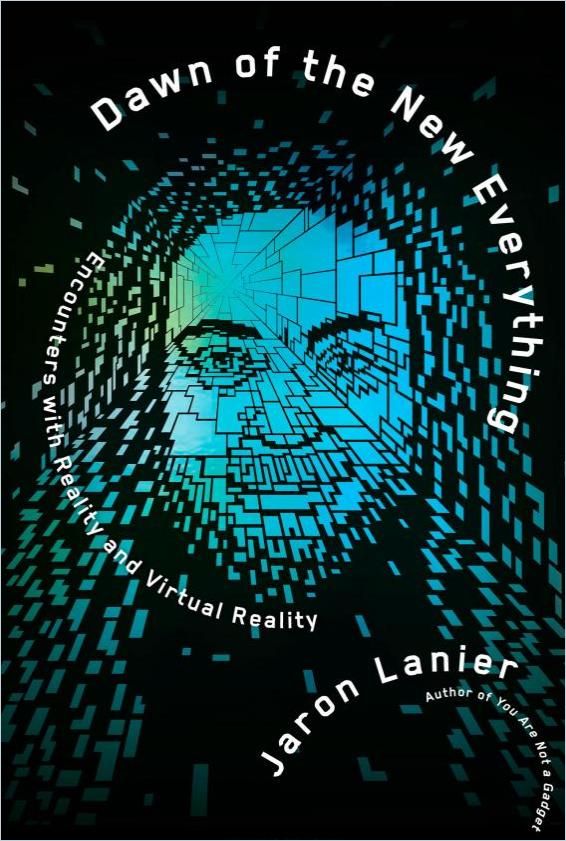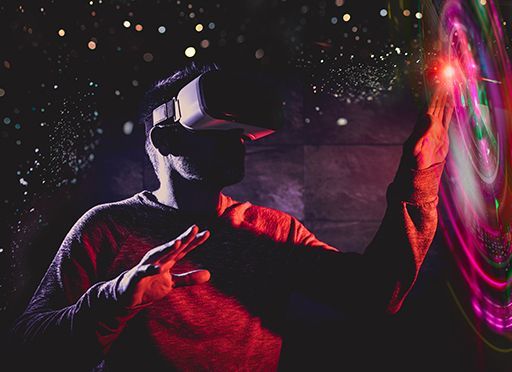Virtual reality genius and avatar Jaron Lanier discusses the many uses and abuses of cyberspace.

Prescient Philosophy
Scientist, musician and writer Jaron Lanier co-founded VPL Research in 1984 to produce the first commercial VR products for entertainment, industry and academic clients. Lanier regards VR as an evolving conduit for elevating human endeavor on the technological, philosophical and scientific frontier. He provides both a tech history and compelling arguments on the danger and utility of VR.
Virtual Reality
Lanier devised the term “virtual reality” in the 1980s. Virtual reality (VR) is a computer-user interface with social and somatic – bodily – qualities. Lanier believes VR weaves together “cinema, jazz and programming.”
VR is one of the scientific, philosophical and technological frontiers of our era.Jaron Lanier
Technically, VR is a mirror image of a person’s sensory and motor organs channeled through a headset and data glove. This simulation tracks human movement and aligns those movements in real time in the world the user explores.
VR is totally immersive. “Avatars” interact with one another, and sensory inputs can “feel” objects.
Lab Rats
Lanier moved to Palo Alto, seeking like-minded people. California in the 1980s was full of “self-proclaimed visionaries,” but yuppies emerged seeking new investments.
Since fantasy comes to us so easily, it’s usually good citizenship to emphasize the edges of an illusion.Jaron Lanier
Because no technology could accommodate his ideas, Lanier turned to the lucrative video game industry, designing popular games, including Moondust, but felt the game industry made players into “lab rats.”
Haptics
Haptics have to do with tactile sensation and a person’s existence in the world. Lanier stresses that you cannot separate sensations from human motion. Haptics describe you in the world, not you as an observer. The input in VR is you. You “become” something in VR, rather than watch or manipulate the world as in a video game. In VR, you could be in the body of a cat, for example, or see yourself through the eyes of another person. Because such experiences teach users how the brain relates to the body, VR could also help with pain management.
VR can either be beautiful art and sympathy or terrible spying and manipulation. We set its meaning.Jaron Lanier
Active haptics require an environment against which the body pushes and pulls. This “force feedback” has had success in the commercial world, especially, for example, the Phantom – a simulator used to train surgeons. Such uses are limited because they are specialized and not portable.
Avatars
In the 1980s, visitors who used early VR devices were amazed by the experience of being in another world. Sensors tracked people’s movements in the VR space to sustain the illusion. The brain sees more than the eyes do and fills in gaps, so low-resolution displays, which can run faster, are still viable.
The world feels more and more like a dystopian mid-20th-century science fiction vision come to life.Jaron Lanier
The VR experience was multipersonal; you encountered other people – “avatars” – in the VR space. Avatars were basic, but the brain can impose biological motion even on a series of dots if the dots resemble human motion. This interactivity is crucial to VR’s value. It demonstrates VR’s possibilities in the future, particularly with sensorimotor loops, wherein humans and digital realms interact and transform one another.
Demand
The VR scene emerged in the 1980s and 1990s, but only a privileged few had access to it. Celebrities like film director Terry Gilliam, multimedia artist Yoko Ono, Senator Al Gore and members of Spinal Tap were enthusiasts. Lanier’s favorite users were kids in wheelchairs, who could experience flying. Popular VR experiences were trap doors, objects that changed shape when you touched them, and the virtual sensation of passing through the walls of objects and seeing them from the inside.
However, the VR party scene depressed and embarrassed Lanier because the technology would take years to meet expectations. To him, it was like a “fake spaceship” for people who longed for space travel that would never happen in their lifetimes. In the 1990s, the popular film The Matrix incorporated VR concepts and philosophies into its story and filmmaking.
Every time you believe in AI, you are reducing your belief in human agency and value. You are undoing yourself and everyone else.Jaron Lanier
Lanier’s early VR firm created products for surgical training, oil exploration, city planning, car manufacturing, psychiatry and the Olympics. It collaborated with Disney companies and puppeteer Jim Henson and worked with the US military and FBI on classified projects.
One-Way Network
In the early 1990s, the World Wide Web emerged. The one-way network, as Tim Berners-Lee designed it, was easy to use and abuse. No agency monitors the web, and no mechanism punishes bad actors. The web became “unknowable,” a true Wild West. But, Lanier reminds readers, you can’t have freedom without acknowledging other people’s rights.
May I suggest that technologists at least try to pretend to believe in human specialness to see how it feels?Jaron Lanier
Lanier is adamant that Silicon Valley dangerously and greedily prioritizes bits of data over the people who create the bits or use them; AI is the worst offender.
Believing in AI
Lanier fears that AI believers – whom he at times compares to religious zealots – don’t understand that as computers advance, so do humans. Each changes the other. But people reject their possible advancement, choosing instead to believe that the internet is infinite, and trust algorithms to think for them.
The tech companies make their money by manipulating your perception of infinity.Jaron Lanier
Yet, VR can, Lanier insists, connect people in expanded ways. Without that connection, however, he regards humanity as at risk of destroying itself. With a change in attitude, people can make technology facilitate “new dimensions of personhood” and much-needed expand empathy.
Passionate Prophecy
You always read about how Silicon Valley in the 1980s was a magnet for the most imaginative people in the world, all looking to express their mad genius. Well, Jaron Lanier incarnates that movement and that moment. Along with his compelling and seemingly correct philosophy, Lanier describes that era – over many pages – as a time when no technology could manifest his ideas. This proves a recurring theme, which proves Lanier’s astonishing prescience. Another theme is Lanier’s concern over the dystopian aspects of the internet and of VR. Engaging, thoughtful, and drawing on his broad and deep experience, Lanier proposes a more morally accountable cyberspace that should appeal to readers interested in VR and Silicon Valley history.
Jaron Lanier also wrote the international bestsellers Who Owns the Future? and You Are Not a Gadget.





